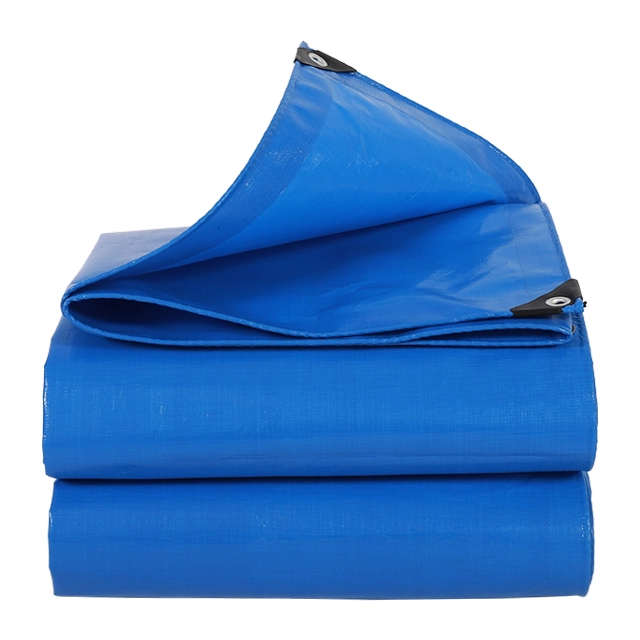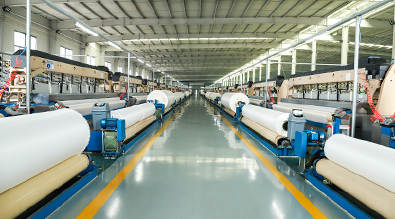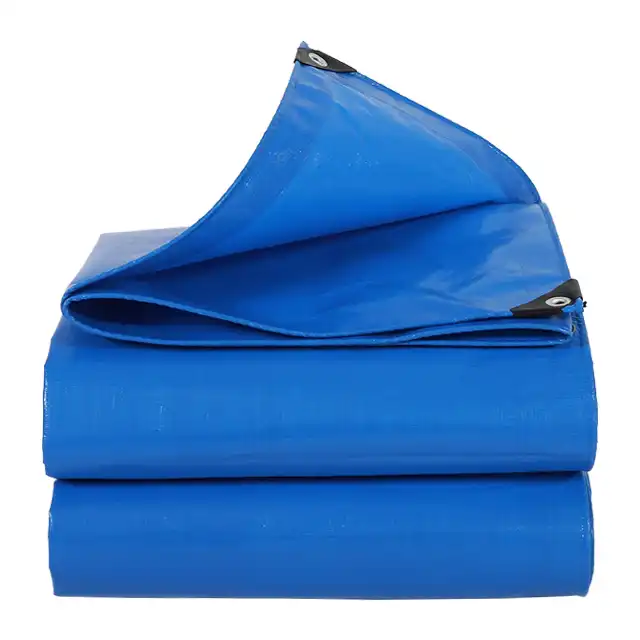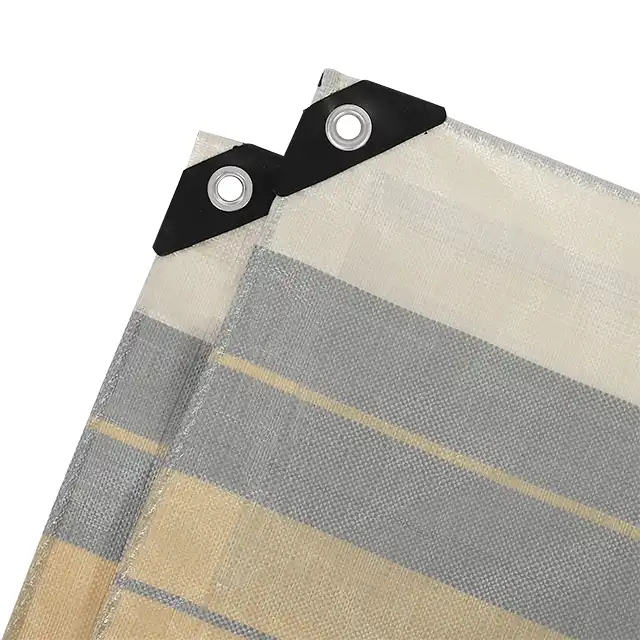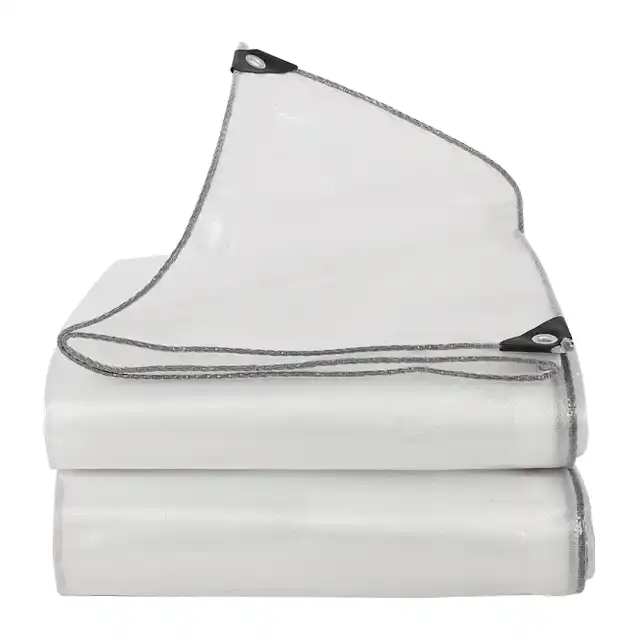Remove Mold from Plastic Tarps: Step-by-Step Cleaning Guide
Mold growth on plastic tarpaulins is a common issue that can compromise both the appearance and functionality of these versatile coverings. Whether you're using a plastic tarpaulin roll for storage, construction, or agricultural purposes, keeping it mold-free is essential for extending its lifespan and maintaining its protective properties. This comprehensive guide will walk you through effective methods to identify, clean, and prevent mold growth on your tarps, ensuring they remain in optimal condition for years to come. With proper care and maintenance, high-quality tarps like those manufactured by Sendow Tarpaulin can continue to provide excellent protection against the elements while resisting mold and mildew.
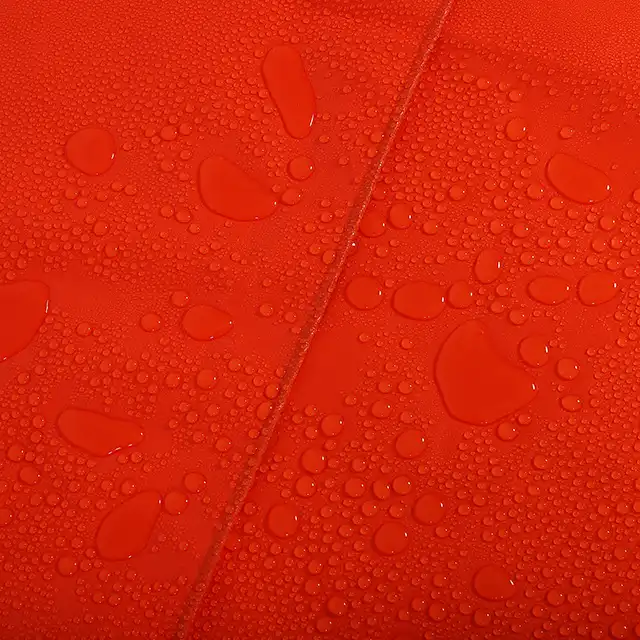
Understanding Mold on Plastic Tarps
What Causes Mold Growth on Tarps?
Mold growth on plastic tarpaulin rolls and sheets is primarily caused by a combination of moisture, organic matter, and favorable environmental conditions. When tarps are stored or used in humid environments without proper ventilation, moisture can become trapped between the folds or on the surface of the tarpaulin. This creates an ideal breeding ground for mold spores, which are naturally present in the air. The situation worsens when organic debris such as leaves, dirt, or dust accumulates on the tarp surface, providing nutrients for mold colonies to thrive. Even high-quality plastic tarpaulin rolls, such as those produced by Sendow Tarpaulin with HDPE woven fabric and LDPE coating, can develop mold under these conditions if not properly maintained. The waterproof nature of these tarps, while excellent for protecting items from rain and moisture, can ironically contribute to condensation forming on the underside, especially when temperature fluctuations occur. This condensation, if not allowed to dry, creates the perfect environment for mold spores to germinate and spread across the tarp surface. Understanding these causative factors is the first step toward effective prevention and maintenance of your valuable tarp investments.
Identifying Different Types of Mold on Tarps
Identifying the specific type of mold affecting your plastic tarpaulin roll is crucial for determining the most effective cleaning approach. Black mold appears as dark spots or patches and is among the most common varieties found on tarps. It's particularly concerning due to its potential health implications and aggressive spread patterns. Green or blue-green mold often indicates Penicillium species, which thrive in damp conditions and can appear powdery or velvety in texture. White mold typically starts as small, barely noticeable spots but can rapidly spread across the entire surface of the tarp. Yellow or orange molds are less common but may indicate specific fungal species that favor particular environmental conditions. When examining your Sendow Tarpaulin products, pay special attention to creases, folds, and areas where the tarp contacts the ground or other surfaces, as these are prime locations for mold colonization. The tightly woven polyethylene fibers of quality tarps can sometimes trap microscopic mold spores in their texture, making early identification challenging. Using a flashlight at an angle across the surface can help reveal mold growth that might otherwise be missed during casual inspection. Remember that different colored molds may require slightly different treatment approaches, though the general cleaning principles outlined in this guide will be effective against most common varieties found on plastic tarpaulin materials.
Health Risks Associated with Moldy Tarps
Exposure to mold growing on plastic tarpaulin rolls poses various health concerns that shouldn't be overlooked. When handling moldy tarps, individuals may inhale airborne mold spores, potentially triggering respiratory issues ranging from mild irritation to severe reactions, especially in those with pre-existing conditions such as asthma or allergies. Prolonged exposure can lead to persistent symptoms including coughing, wheezing, nasal congestion, throat irritation, and in some cases, more serious respiratory complications. Beyond respiratory concerns, certain mold species produce mycotoxins that can cause skin irritation upon contact, resulting in rashes, redness, or itching when handling affected plastic tarpaulin materials without proper protection. This risk becomes particularly significant when cleaning large-area tarps used for applications like truck covers or goods protection where substantial mold growth may have occurred. While Sendow Tarpaulin products incorporate UV treatment and anti-freezing properties that help resist mold growth, even the highest quality tarps can develop mold under unfavorable conditions. When tackling mold removal, always wear appropriate protective gear including gloves, eye protection, and ideally a mask or respirator to minimize exposure to spores that become airborne during the cleaning process. For extensive mold contamination covering large sections of industrial-grade tarps used in aquaculture or greenhouse applications, consider performing the cleaning outdoors in well-ventilated areas to further reduce health risks associated with concentrated mold exposure.
Effective Mold Removal Techniques
Preparing for the Cleaning Process
Before tackling mold on your plastic tarpaulin roll, proper preparation is essential to ensure effective cleaning while protecting yourself and your surroundings. Start by selecting an appropriate cleaning location—ideally outdoors on a sunny, breezy day, which naturally helps in mold eradication and prevents spores from contaminating indoor spaces. If outdoor cleaning isn't possible, choose a well-ventilated area with surfaces protected by disposable sheeting. Gather your cleaning supplies in advance: protective gear (rubber gloves, eye protection, and an N95 mask or respirator to prevent spore inhalation), cleaning solutions (which we'll discuss in the next section), several clean spray bottles for solution application, soft-bristled brushes of varying sizes for different areas of the tarp, clean microfiber cloths, and a garden hose or access to clean water for rinsing. For large Sendow Tarpaulin products that feature their tear-resistant and highly durable construction, you may need to recruit help as handling wet tarps, especially those made from heavier 180gsm material with 14×14 mesh count, can be challenging. Before applying any cleaning solution, unfold the tarp completely and gently remove loose debris with a soft brush or broom—this prevents organic matter from being ground into the tarp during cleaning. For heavily soiled areas, consider pre-rinsing with plain water to remove surface contaminants. This preparation phase is particularly important when dealing with larger applications such as truck covers or greenhouse fabrics where significant mold growth may have occurred across extensive surface areas of your plastic tarpaulin roll.
DIY Cleaning Solutions vs. Commercial Products
When it comes to removing mold from plastic tarpaulin rolls, you have options between effective DIY solutions and specialized commercial products. For the DIY approach, a mixture of white vinegar and water (1:1 ratio) serves as an excellent natural mold killer that penetrates the porous structure of molds without damaging the HDPE woven fabric and LDPE coating of quality tarps. Another powerful homemade solution combines one cup of borax dissolved in one gallon of warm water, which not only kills existing mold but helps prevent future growth. For stubborn mold on heavy-duty tarps like Sendow's middle-duty PE tarpaulin (100gsm-180gsm), a mixture of one part hydrogen peroxide (3%) to two parts water can provide enhanced cleaning power while remaining relatively gentle on the material. Commercial products specifically formulated for mold removal on plastic surfaces offer convenience and often contain specialized enzymes or antimicrobial agents that provide longer-lasting protection. When selecting commercial cleaners for your plastic tarpaulin roll, look for products specifically labeled safe for use on polyethylene materials. Products containing quaternary ammonium compounds are particularly effective against mold while being compatible with most tarp materials. For tarps used in sensitive applications such as aquaculture impermeable tarps or picnic pads where food contact may occur, consider eco-friendly commercial cleaners that are both effective and non-toxic. Whichever cleaning solution you choose, always test on a small, inconspicuous area of your tarp first to ensure it doesn't cause discoloration or damage to the waterproof coating that gives Sendow Tarpaulin products their 100% waterproof and tear-resistant properties.
Step-by-Step Mold Removal Process
The systematic removal of mold from your plastic tarpaulin roll requires attention to detail and patience to ensure comprehensive cleaning without damaging the material. Begin by spreading the tarp completely flat on a clean surface, preferably in direct sunlight which naturally helps kill mold spores. For safety, don your protective gear including gloves, eye protection, and a mask to prevent inhaling airborne spores that will be released during cleaning. Apply your chosen cleaning solution generously to affected areas, using a spray bottle for even distribution across the tarp's surface. Allow the solution to penetrate the mold for 15-20 minutes—this dwell time is crucial for breaking down the mold structure, especially on textured surfaces of HDPE woven fabric tarps like those manufactured by Sendow Tarpaulin. Using a soft-bristled brush, gently scrub the affected areas in circular motions, paying special attention to seams, grommets, and corners where mold tends to be most persistent. For heavily infested areas on high-density tarps (140-280gsm), you may need to repeat the application and scrubbing process. After thoroughly cleaning all moldy sections, rinse the entire plastic tarpaulin roll thoroughly with clean water, ensuring all cleaning solution residue is removed to prevent potential material deterioration over time. For extra-wide tarps (Sendow offers widths up to 5.1m), you might need to clean in sections, ensuring overlap between areas to avoid missing spots. Once rinsed, immediately dry the tarp completely—first by gently squeezing out excess water (never wring the material as this can damage the coating and weaken the fibers), then by hanging it in a breezy area with good sunlight exposure. The UV-treated material of quality tarps will withstand sun exposure during this drying phase, and the complete drying is essential to prevent immediate mold recurrence on your freshly cleaned plastic tarpaulin roll.
Preventing Future Mold Growth
Proper Storage Techniques for Plastic Tarps
Proper storage of your plastic tarpaulin roll is paramount in preventing mold recurrence and extending its usable lifespan. After ensuring your tarp is completely dry, fold it loosely rather than tightly packing it, which can trap residual moisture within the folds. Creating moderate-sized folds allows for some air circulation even in storage. For long-term storage of high-quality tarps like Sendow's waterproof PE tarpaulins, consider inserting silica gel packets between the folds to absorb any ambient moisture—this is particularly important in humid climates or during rainy seasons. The storage location itself is equally critical; choose a cool, dry area with consistent temperature and low humidity levels. Avoid storing plastic tarpaulin rolls in basements, garages, or sheds that experience significant temperature fluctuations or humidity issues, as these conditions promote condensation on the tarp surface. For maximum protection, place your folded tarp in a breathable storage bag or container that allows minimal air exchange while preventing dust accumulation—avoid completely airtight plastic containers which can trap moisture. If storing multiple tarps of different sizes or types, such as those used for truck covers versus leisure tents, label them clearly and avoid stacking heavier items on top of stored tarps, as this can create pressure points that trap moisture. For large commercial quantities of plastic tarpaulin rolls, consider vertical storage systems that keep the material elevated from the ground and separated enough to allow air circulation. Implementing these storage practices is especially important for maintaining the integrity of tarp features such as the arctic flexibility and shrink-proof qualities that make Sendow Tarpaulin products suitable for diverse applications from wood covers to greenhouse fabrics.
Regular Maintenance and Inspection Routines
Establishing a regular maintenance schedule for your plastic tarpaulin roll is essential for early detection and prevention of mold issues. For tarps in active use, such as truck covers or construction site protection, perform visual inspections at least once a month, checking for early signs of mold or mildew which typically appear as small discolored spots on the surface. For seasonal-use tarps like those used for garden furniture covers or sun shade covers, conduct thorough inspections before and after storage periods. When examining your tarp, pay particular attention to areas where water might pool, such as slight depressions or around grommets and seams—these are prime locations for mold to begin developing on even the highest quality HDPE woven fabric tarps. During these inspections, lightly brush off any accumulated debris, pollen, or organic matter that could provide nutrients for mold growth. For Sendow Tarpaulin products featuring specialized UV treatment (1%-7%), periodic cleaning even in the absence of visible mold helps maintain this protective feature at optimal effectiveness. Consider creating a maintenance log for valuable or large plastic tarpaulin rolls used in commercial applications, noting dates of cleaning, any repairs made, and observations about the condition of the material. This tracking helps identify patterns of wear or environmental conditions that might be contributing to mold issues. For tarps used in critical applications like impermeable coverings for aquaculture or irrigation hose protection, where mold could contaminate water systems, increase inspection frequency to weekly during peak humidity seasons. Remember that high-quality tarps with anti-corrosion and highly durable properties, like those manufactured with 10x10-14x14 mesh count, will maintain their protective capabilities longer with proper maintenance routines that prevent mold colonization.
Environmental Controls to Minimize Mold Risk
Controlling the environment around your plastic tarpaulin roll plays a crucial role in preventing mold growth even when the tarp is in active use. For tarps deployed as temporary structures, sun shade covers, or leisure tents, ensure adequate ventilation by avoiding completely sealed configurations—allow for strategic airflow that minimizes moisture accumulation while still providing the protection needed. When using tarps for greenhouse fabrics or car canopies, incorporate design elements that promote air circulation, such as small vents or gaps that won't compromise the waterproof functionality but will reduce humidity beneath the covering. The positioning of your tarp installation can significantly impact mold risk; avoid placing plastic tarpaulin rolls in heavily shaded areas where sunlight (a natural mold inhibitor) cannot reach the surface regularly. For large-scale agricultural applications or construction site protection, consider periodically repositioning the tarp if feasible to ensure all sections receive some exposure to UV light, taking advantage of the UV treatment already incorporated into quality tarps like those from Sendow Tarpaulin. In regions with high seasonal rainfall or humidity, supplementary measures may be necessary—consider using portable dehumidifiers in enclosed spaces protected by tarps or applying environmentally safe mold-inhibiting sprays to the tarp surface as a preventative measure. For tarps used in picnic pads or other ground-contact applications, place a moisture barrier between the ground and your plastic tarpaulin roll to prevent ground moisture from penetrating the material. When using tarps for long-term outdoor applications like wood covers or goods protection, periodic tensioning to eliminate sags where water can collect will significantly reduce mold risk while also extending the life of the tarp by preventing water weight stress on the material. These environmental control strategies work in concert with the inherent features of high-quality tarps—such as the 100% waterproof, tear-resistant, and anti-freezing properties of Sendow's products—to provide maximum protection against mold growth.
Conclusion
Properly maintaining and cleaning mold from your plastic tarpaulin roll is essential for extending its lifespan and ensuring continued protection for your valuable assets. By understanding the causes of mold growth, implementing effective cleaning techniques, and following preventative measures, you can keep your tarps in optimal condition for years to come. Remember that high-quality tarps, like those produced by Linyi Shengde Plastic Co., Ltd., offer superior resistance to environmental challenges when properly maintained.
With 20 years of industry experience and a commitment to excellence, Sendow Tarpaulin provides products that combine durability with performance. Our advanced manufacturing capabilities and rigorous quality control ensure that every tarp meets the highest standards. Whether you need tarps for construction, transportation, agriculture, or leisure activities, we're here to help. Have questions about mold prevention or need assistance selecting the right tarp for your specific application? Contact our expert team at info@shengdetarp.com.
References
1. Martinez, J.P. (2023). "Industrial Applications of Polyethylene Tarpaulins and Maintenance Best Practices." Journal of Industrial Materials, 45(2), 112-128.
2. Wang, L. & Thompson, K.R. (2022). "Mold Prevention and Remediation Techniques for Outdoor Textile Materials." Environmental Microbiology Reports, 14(3), 89-103.
3. Patel, S.K. (2023). "The Impact of UV Stabilization on Mold Resistance in Polyethylene Products." Polymer Degradation and Stability, 177, 109-123.
4. Johnson, R.H. & Lee, C.M. (2021). "Comparative Analysis of Commercial Mold Removers on Synthetic Fabrics." International Journal of Environmental Health Research, 31(5), 512-527.
5. Chen, X. & Williams, P.T. (2022). "Sustainable Practices in Maintaining High-Density Polyethylene Coverings." Journal of Sustainable Materials, 19(4), 304-318.
6. Rodriguez, E.F. & Kumar, A. (2023). "Microbial Colonization Patterns on Outdoor Protective Coverings." Applied and Environmental Microbiology, 89(6), e02245-22.
